The history of the gaming market, part 1
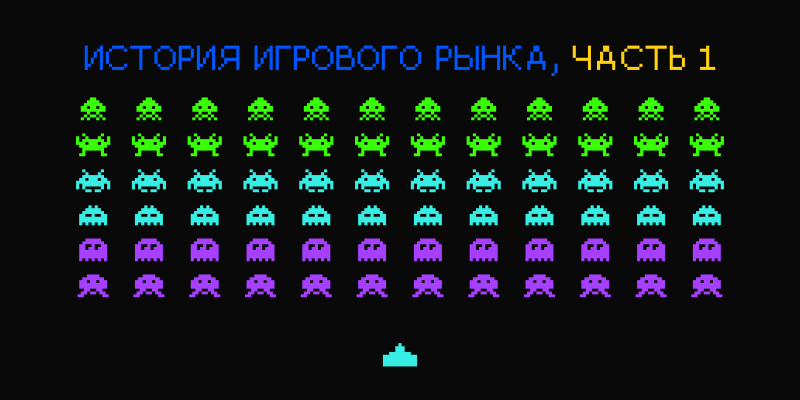
The birthday of one of the most famous computer games in the world, Tetris, is approaching. And the fact that authorship belongs to our compatriot, Aleksey Pajitnov, is all the more pride. Spawning since the colossal circulation, this game has not brought any dividends to its creator. This was largely due to a number of objective reasons, one of which was the absence of the gaming market as such in the USSR. Since then a lot of water has flowed under the bridge, there have been many changes. A gaming market has emerged in Russia that has passed through various stages of growth. And today we would like to recall how this process proceeded, recall the memorable milestones, which were accumulated not so little in the 30 years that have passed since the creation of Tetris.
We dedicated the first part to games for personal computers, starting from the times of the almost Old Testament Perestroika. In the second part, we recall the history of the development of the market for game consoles and multiplayer games, and the third part will be entirely devoted to the
the USSR
The market of virtual entertainment began to take shape in Russia much later than in the West. This is due to objective historical factors that influenced other sectors of the economy in the post-Soviet space.')
The distribution of games that hit the USSR along with the first computers in the late 80s was of a strictly non-commercial nature. Game programs that came into the Soviet Union were freely copied using floppy disks, compact cassettes and other information carriers distributed at that time.
The first domestic games appeared a few years after the western ones. One of the first games that quickly became popular not only in Russia, but also abroad - the legendary Tetris. The game was born in 1984 in the course of solving a working task in the structure of the CC of the USSR Academy of Sciences. After Tetris was ported to the IBM PC platform, its popularity began to grow.
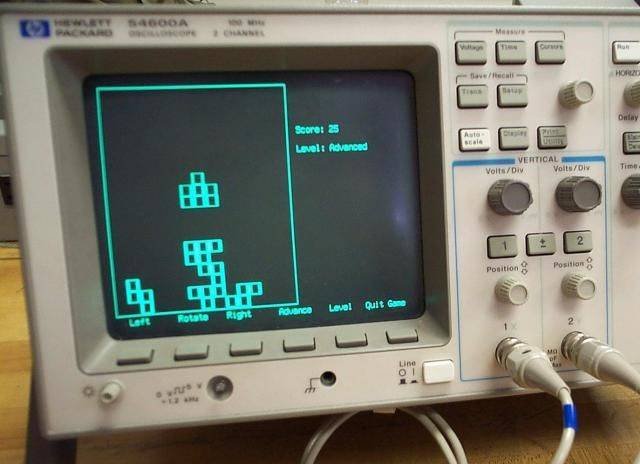
For the “iron curtain” Tetris got a year later and, thanks to Hungarian programmers, became available on Apple II and Commodore 64. Around this time, Spectrum Holobyte and Mirrorsoft acquired the rights to Tetris, and without the participation of the creator - Alexey Pajitnov. Because of the uncertain situation with the rights of profit from the huge sales of the game all over the world went to anyone except the game developer.
The origin of the market
By and large, the market of computer entertainment began to take shape in Russia only in the 90s. More than 90% of it was pirated, and this applied to both PC games and the console market. There were no special versions of games for the Russian market. Those few companies that were engaged in the implementation of licensed (boxed) games, individually imported copies purchased at retail prices in foreign stores. Licensed software (including games) was not in demand on the Russian market, so its sale was of an auxiliary nature for the main business (most often, PC and office equipment).The creation of games involved only a few development teams. Accordingly, the game could also be counted on the fingers. Thus, in 1990, the Perestroika game, invented by Nikita Skripkin, sold out in millions of copies (in 1991, Skripkin co-founded the company NIKITA, which later changed its name to NIKITA ONLINE). In 1992, the Gamos Color Lines entered the market.
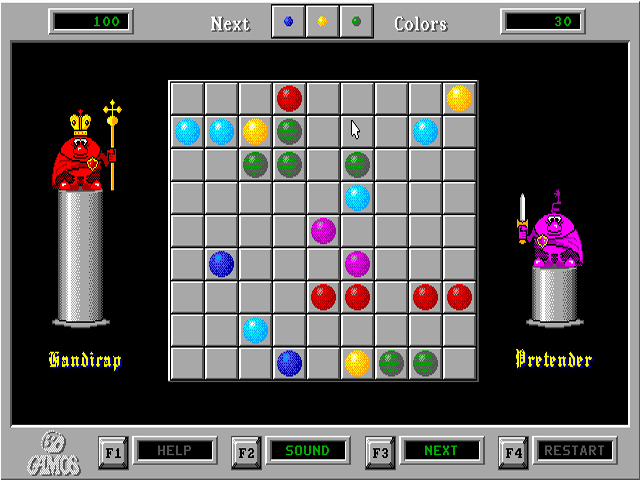
Another famous development of Gamos was the adventure game based on the cartoon “The Adventures of the Pilots Brothers. In the footsteps of a striped elephant. ”

The rise and fall of the pirate empire
Nobody even thought about making serious money on developing and publishing games in Russia. Many authors received the lion's share of the income from publishing their products abroad.The main profit from the sale of games in the 90s was accounted for by pirated firms, whose number was rapidly increasing in proportion to the growth of the iron market. At the same time, sellers of pirated copies of games tried to impart a “serious” look to their products - software diskettes were packed in plastic cases. Cases, in turn, were supplied with a “polygraph” - a screenshot printed on a matrix printer from the game, accompanied by a small text-description. However, even such products were ignored by consumers - the games could be rewritten from friends for free using the same floppy disks.

Manufacturers of games (primarily Western) sought to protect their products from illegal distribution. For example, one of the most common methods of protection was the question that arises when installing a game or directly in the process of passing. It was possible to continue the installation or the game only by entering the correct answer, however, domestic craftsmen easily cracked protection systems.
Since the mid-90s, the domestic market of pirated games has received a powerful driver of growth due to a strong drop in the cost of multimedia equipment - a set of CD-ROM and sound card. Like mushrooms after the rain, numerous points of sale of pirated discs have grown throughout the post-Soviet space (from large markets to single trays located in places of jaunty). In addition, ordinary users could not replicate pirated games as freely as they did in the days of floppy disks: in the era of optical drives, this required appropriate equipment and consumables (a CD burner and discs), which at that time were fabulously expensive.
At the same time, the fight against piracy, which was initiated by the developers themselves, significantly intensified in Russia. The business managed to get the authorities to regularly conduct raids on the most popular pirate objects - the Moscow Mitinsky radio market and Gorbushka. Detected pirated copies were seized and destroyed, merchants and, rarely, point owners were brought to justice. This led to a serious reduction in the range of domestic games in illegal circulation, but had virtually no effect on the spread of Western games: the interests of foreign publishers were still not protected by anyone.
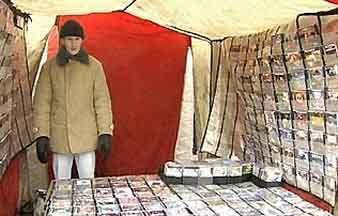
Among the few domestic projects of that time, we can recall the game "Russian Roulette" (Buka company), "Twigger" (NIKITA ONLINE), "Kremlin Undergrounds" (NewCom) and others.


In 1997, a new round of anti-counterfeiting took place. The Association for the Suppression of Computer Piracy (ACPA) was created. It includes a number of domestic companies - developers and publishers of games and multimedia distributors. The organization has repeatedly declared close cooperation with the “K” division of the Ministry of Internal Affairs, with which it conducted raids on the most popular trading platforms, seizing and destroying confiscated pirated products.

The situation on the gaming market has changed dramatically during the 1998 crisis. The sharply increased dollar rate made the sale of licensed western developments practically unprofitable, which prompted foreign publishers to reconsider pricing policies in the domestic market. In the late 90s, "cost-effective" solutions began to actively appear on the market. Outwardly, they differed little from pirated products (it should be noted that by that time pirated and licensed products were equal in quality to the printing industry), which was traditionally sold in ordinary CD cases.
Such solutions, called jewel case, cost almost as cheap as pirated discs. At the same time, the user who buys the jewel case was convinced that he was acquiring a legal product that was provided with the support of the publisher, a guarantee of quality and, importantly, does not contain viruses and other unpleasant surprises. For game publishers, the release of such circulations was important because their products could be distributed through the same distribution channels as counterfeit (markets, individual points, “collapse”). This greatly expanded the reach of the potential audience. Over time, as the game catalog was filled, as well as the expansion of its own distribution network, prices for licensed products were gradually increased by publishers (roughly from $ 2-3 in 1999 to $ 20-30 in 2008).
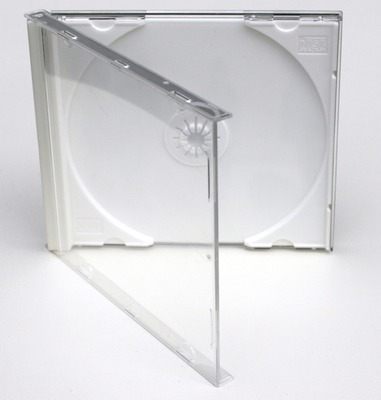
At first, this practice did not meet with understanding of all market participants. Some publishers believed that the low cost of a copy could not even recoup the funds invested in product development, not to mention making a profit. However, the unprecedented level of sales jewel case showed the opposite. Thus, the first edition of the game Heroes of Might & Magic 3 (1999) in Russia amounted to more than 70 thousand copies. For comparison, earlier, a circulation of 10-15 thousand copies was considered an excellent achievement for hit domestic games (for example, Russian Roulette was sold in such a circulation).
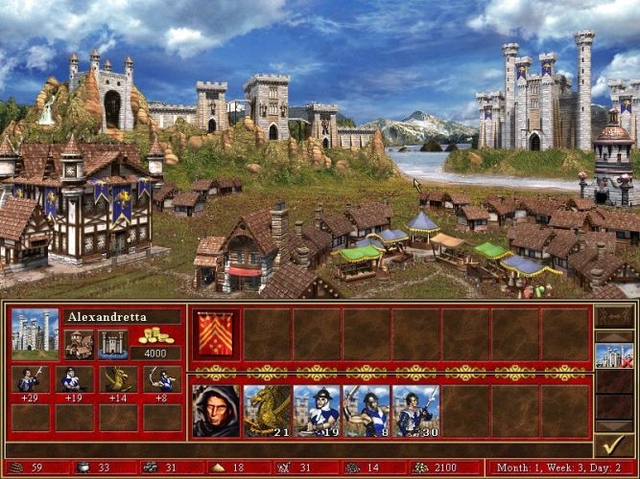
By the early 2000s, only three players were present in the licensed gaming market: Buka, 1C, and New Disc. These three companies not only completely controlled the market, but also very actively competed with each other for the sake of obtaining rights to publish certain games. However, many other official market participants had “subsidiary” pirated publishing houses, which were quite competitive with the three companies mentioned above, producing pirated versions of their product range. Some examples of such well-known trademarks as 7 Wolf, Fargus, Triada can be cited. The highest quality translations were made by the Fargus pirate studio, which led to the gradual seizure of its products by a substantial market share. In the mid-2000s, competition between pirated publishers entered an acute phase, and the official registration of the Fargus trademark and the attempt to obtain an injunction to release pirated products under this brand to all other pirated companies became the apotheosis. Pirates sued the pirates.

In the future, almost all domestic publishers and representatives of Western structures in Russia used budget solutions to stimulate sales of licensed products. It can be said that it was the crisis of 1998 that became the necessary catalyst that largely spurred the development of the civilized market of games in Russia.
Another event, which, in the opinion of many participants of the gaming market, seriously influenced the growth of sales of licensed products, was the release of the StarForce3 protection system, which was presented to developers and publishers in the early 2000s.
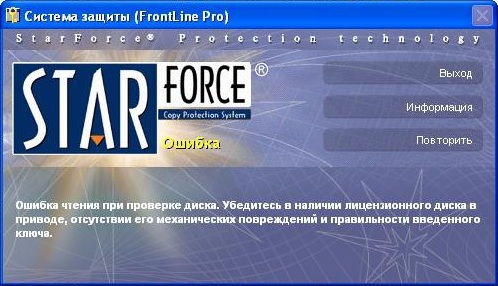
With the advent of the system, many incidents are connected, sometimes quite unpleasant. For example, a large gaming resource publicly refused to review games where this protection technology was used, because the editorial staff repeatedly had problems launching new products on their PCs. Such complaints were related to the protection algorithms that were used in the system. So, one of them was data integrity checking. One, even the most insignificant, scratch on the disk could be the reason for the failure of the game because StarForce assumed that the drive contains a pirated copy of the media. However, despite similar incidents, the system has coped with its main task - to postpone the release of the pirated version from the date of the game release as much as possible. This made it possible to protect more than one expensive game project of both Russian and foreign development.
Source: https://habr.com/ru/post/225325/
All Articles